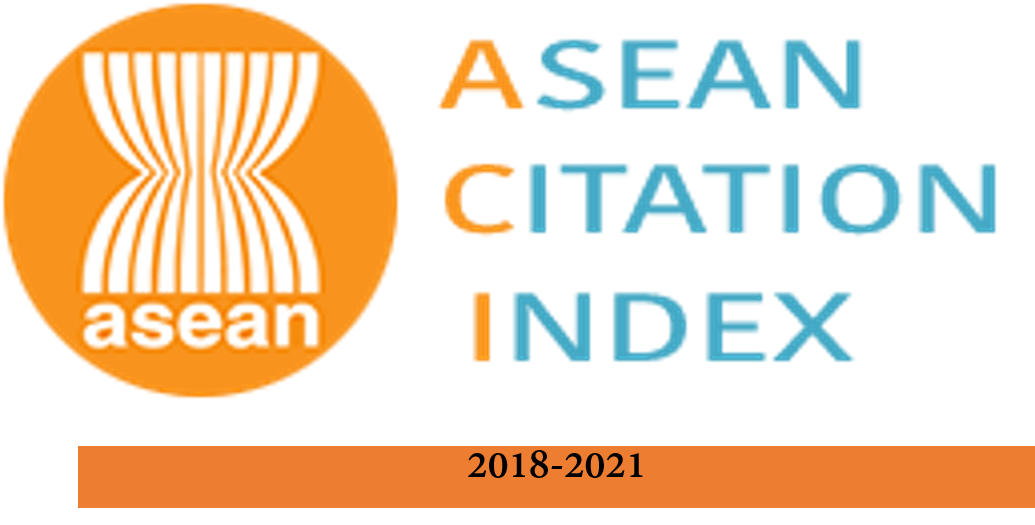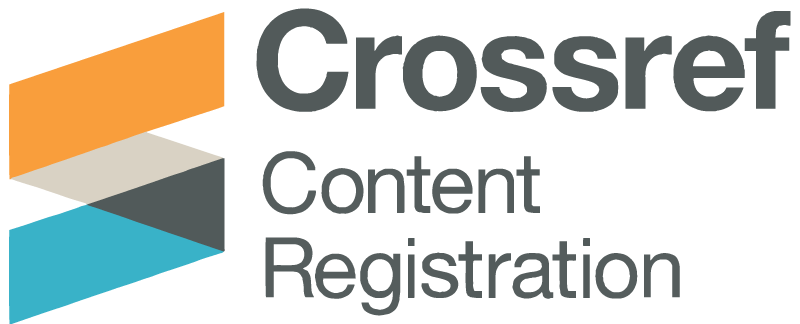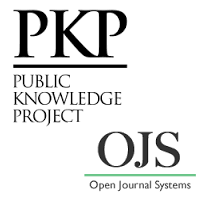Role of Social Capital on the Resilient Capacity of Cooperatives
Abstract
This paper is an exploratory study that aims to identify, describe, and compare the level of social capital on two types of cooperatives that have existed for a long time. The factors are determined by examining the structure of the organization and the members social capital. There were 120 respondents who were interviewed using the survey questionnaire to determine the members socio-demographic characteristics and ascertain the members level of social capital. A concurrent mixed method was used in the gathering and analysis of data. This study found that the member-respondents of the cooperatives have shown a high level of social capital in three dimensions: trust, norms, and reciprocity; networks and collective actions; and information and empowerment. However, the result of the T-test shows a significant difference between cooperatives in two dimensions: 1) trust, norms, and reciprocity, and 2) networks and collective actions. An examination of the profile of the organizations and their members revealed that the members ethnicity, religiosity, close family ties, and neighborliness may have contributed to a significant difference in these dimensions. Furthermore, the factors mentioned were found to impact how the cooperatives respond to, cope with, and mitigate threats, crises, and disasters. Furthermore, between cooperatives, better social capital is associated with better resiliency. This study recommends a more robust network affiliation with cooperatives in Bukidnon, Philippines and other cooperatives in the locale. It also recommends that the cooperatives may conduct routine risk assessments and create innovative ways to sustain the members social capital.
Keywords:
Community-based organizations, cooperatives, organizational structure, social capital
References
Aldrich, D. P. (2012). Building resilience: Social capital in post-disaster recovery. The University of Chicago Press. https://doi.org/10.7208/Chicago/9780226012896.001.0001
Borda-Rodriguez, A., Johnson, H., Shaw, L., & Vicari, S. (2016). What makes rural cooperatives resilient
in developing countries? Journal of International Development, 28(1), 89-111.
https://doi.org/10.1002/jid.3125
Bourdieu, P. (1986). The forms of capital. Handbook of theory and research for the sociology of education (pp.
241-258). Greenwood Press. https://doi.org/10.1007/s11010-011-0831-4
Birchall, J. (2013). Resilience in a downturn: The power of financial cooperatives. International Labour
Organization, 65. http://ccednet-rcdec.ca/en/node/12026
Claridge, T. (2018a). Dimensions of social capital - structural, cognitive, and relational. Social Capital Research.
Claridge, T. (2018b). Functions of social capital - bonding, bridging, linking. Social Capital Research.
Claridge, T. (2021). Evolution of the concept of social capital. https://doi.org/10.5281/zenodo.8015737
Coleman, J. S. (1986). Social theory, social research, and a theory of action. American Journal of Sociology,
91(6), 1309-1335. https://doi.org/10.1086/228423
Duchek, S. (2019). Organizational resilience: A capability-based conceptualization. Business Research. https://
doi.org/10.1007/s40685-019-0085-7
Field, J. (2008). Social capital. New York: Routledge. https://philpapers.org/rec/FIESC
Field, J. (2013). Social capital. Routledge, Taylor & Francis Group, 53(9), 1689-1699. https://doi.org/10.1017/
CBO9781107415324.004
Fukuyama, F. (2000). Social capital and civil society. In IMF Institute Conference (pp. 1-18). International Monetary Fund.
Giorgas, D. (2000). Social capital within ethnic communities. ANU Research Publications. https://openresearch￾repository.anu.edu.au/handle/1885/41477
Grootaert, C., Narayan, D., Nyhan Jones, V., & Woolcock, M. (2004). Measuring social capital: An integrated
questionnaire. In J. Page & S. Jorgenson (Eds.), World Bank Working Papers.
https://openknowledge.worldbank.org/handle/10986/15033
Hatak, I., Lang, R., & Roessl, D. (2016). Trust, social capital, and the coordination of relationships between the
members of cooperatives: A comparison between member-focused cooperatives and third-party-focused
cooperatives. Voluntas, 27(3), 1218-1241. https://doi.org/10.1007/s11266-015-9663-2
Jia, B. X. (2018). The role of social capital in building organizational resilience. UC Library. http://dx.doi.org/10.26021/5475
Krishna, A. (2002). Active social capital: Tracing the roots of development and democracy. Columbia University
Press. https://doi.org/10.1017/CBO9781107415324.004
Lin, N. (2002). Social capital: A theory of social structure and action. Cambridge University Press.
Lin, N. (2004). Social capital: A theory of social structure and action. The British Journal of Psychiatry,
112(483), 211-212. https://doi.org/10.1192/bjp.112.483.211-a
McMillan, D. W., & Chavis, D. M. (1986). Sense of community: A definition & theory. Journal of Community
Psychology, 14(4), 315-325.
Mhembwe, S., & Dube, E. (2017). The role of cooperatives in sustaining the livelihoods of rural communities:
The case of rural cooperatives in Shurugwi District, Zimbabwe. Journal of Disaster Risk Studies, 9(1).
https://doi.org/10.4102/jamba.v9i1.341
Official Gazette No. 23. (1973). Implementing PD No. 175 governing the organization, administration, and
supervision of Samahan Nayon (Barrio Associations) and Kilusang Bayan (Cooperatives).
https://www.officialgazette.gov.ph/1973/07/09/letter-of-implementation-no-23-s-1973/
Putnam, R. D. (1993). The prosperous community: Social capital and public life. The American Prospect,
35-42.
Putnam, R. D. (2000). Bowling alone: The collapse and revival of American community. https://doi.org/10.1017/
CBO9781107415324.004
Republic Act 9520. (2009). Philippine Cooperative Code of 2008. https://lawphil.net/statutes/repacts/ra2009/
ra_9520_2009.html
Rodriguez, A., Johnson, H., Shaw, L., & Vicari, S. (2016). What makes rural co-operatives resilient in developing
countries? Journal of International Development, 28(1), 89-111.
https://doi.org/10.1002/jid.3125
Tantardini, M., & Kroll, A. (2016). The role of organizational social capital in performance management. Public
Performance and Management Review, 39(1), 83-99.
https://doi.org/10.1080/15309576.2016.1071163
Woolcock, M. (2001). The place of social capital in understanding social and economic outcomes. Canadian
Journal of Policy Research.
Woolcock, M., & Narayan, D. (2000). Social capital: Implication for development theory, policy and practices.
World Bank Research Observer. https://doi.org/10.1117/12.772411
Borda-Rodriguez, A., Johnson, H., Shaw, L., & Vicari, S. (2016). What makes rural cooperatives resilient
in developing countries? Journal of International Development, 28(1), 89-111.
https://doi.org/10.1002/jid.3125
Bourdieu, P. (1986). The forms of capital. Handbook of theory and research for the sociology of education (pp.
241-258). Greenwood Press. https://doi.org/10.1007/s11010-011-0831-4
Birchall, J. (2013). Resilience in a downturn: The power of financial cooperatives. International Labour
Organization, 65. http://ccednet-rcdec.ca/en/node/12026
Claridge, T. (2018a). Dimensions of social capital - structural, cognitive, and relational. Social Capital Research.
Claridge, T. (2018b). Functions of social capital - bonding, bridging, linking. Social Capital Research.
Claridge, T. (2021). Evolution of the concept of social capital. https://doi.org/10.5281/zenodo.8015737
Coleman, J. S. (1986). Social theory, social research, and a theory of action. American Journal of Sociology,
91(6), 1309-1335. https://doi.org/10.1086/228423
Duchek, S. (2019). Organizational resilience: A capability-based conceptualization. Business Research. https://
doi.org/10.1007/s40685-019-0085-7
Field, J. (2008). Social capital. New York: Routledge. https://philpapers.org/rec/FIESC
Field, J. (2013). Social capital. Routledge, Taylor & Francis Group, 53(9), 1689-1699. https://doi.org/10.1017/
CBO9781107415324.004
Fukuyama, F. (2000). Social capital and civil society. In IMF Institute Conference (pp. 1-18). International Monetary Fund.
Giorgas, D. (2000). Social capital within ethnic communities. ANU Research Publications. https://openresearch￾repository.anu.edu.au/handle/1885/41477
Grootaert, C., Narayan, D., Nyhan Jones, V., & Woolcock, M. (2004). Measuring social capital: An integrated
questionnaire. In J. Page & S. Jorgenson (Eds.), World Bank Working Papers.
https://openknowledge.worldbank.org/handle/10986/15033
Hatak, I., Lang, R., & Roessl, D. (2016). Trust, social capital, and the coordination of relationships between the
members of cooperatives: A comparison between member-focused cooperatives and third-party-focused
cooperatives. Voluntas, 27(3), 1218-1241. https://doi.org/10.1007/s11266-015-9663-2
Jia, B. X. (2018). The role of social capital in building organizational resilience. UC Library. http://dx.doi.org/10.26021/5475
Krishna, A. (2002). Active social capital: Tracing the roots of development and democracy. Columbia University
Press. https://doi.org/10.1017/CBO9781107415324.004
Lin, N. (2002). Social capital: A theory of social structure and action. Cambridge University Press.
Lin, N. (2004). Social capital: A theory of social structure and action. The British Journal of Psychiatry,
112(483), 211-212. https://doi.org/10.1192/bjp.112.483.211-a
McMillan, D. W., & Chavis, D. M. (1986). Sense of community: A definition & theory. Journal of Community
Psychology, 14(4), 315-325.
Mhembwe, S., & Dube, E. (2017). The role of cooperatives in sustaining the livelihoods of rural communities:
The case of rural cooperatives in Shurugwi District, Zimbabwe. Journal of Disaster Risk Studies, 9(1).
https://doi.org/10.4102/jamba.v9i1.341
Official Gazette No. 23. (1973). Implementing PD No. 175 governing the organization, administration, and
supervision of Samahan Nayon (Barrio Associations) and Kilusang Bayan (Cooperatives).
https://www.officialgazette.gov.ph/1973/07/09/letter-of-implementation-no-23-s-1973/
Putnam, R. D. (1993). The prosperous community: Social capital and public life. The American Prospect,
35-42.
Putnam, R. D. (2000). Bowling alone: The collapse and revival of American community. https://doi.org/10.1017/
CBO9781107415324.004
Republic Act 9520. (2009). Philippine Cooperative Code of 2008. https://lawphil.net/statutes/repacts/ra2009/
ra_9520_2009.html
Rodriguez, A., Johnson, H., Shaw, L., & Vicari, S. (2016). What makes rural co-operatives resilient in developing
countries? Journal of International Development, 28(1), 89-111.
https://doi.org/10.1002/jid.3125
Tantardini, M., & Kroll, A. (2016). The role of organizational social capital in performance management. Public
Performance and Management Review, 39(1), 83-99.
https://doi.org/10.1080/15309576.2016.1071163
Woolcock, M. (2001). The place of social capital in understanding social and economic outcomes. Canadian
Journal of Policy Research.
Woolcock, M., & Narayan, D. (2000). Social capital: Implication for development theory, policy and practices.
World Bank Research Observer. https://doi.org/10.1117/12.772411
Published
2023-12-29
Section
Articles
Copyright (c) 2023 Asia Pacific Journal of Social and Behavioral Sciences
Copyright holder is the Bukidnon State University.
How to Cite
Amigo, Rotchel L. and Chona Patricia R. Echavez. Role of Social Capital on the Resilient Capacity of Cooperatives." Asia Pacific Journal of Social and Behavioral Sciences, 21 (2023): 29-42.
Amigo, R. L. & Echavez, C. P. R. (2023). Role of Social Capital on the Resilient Capacity of Cooperatives. Asia Pacific Journal of Social and Behavioral Sciences, 21, 29-42.










